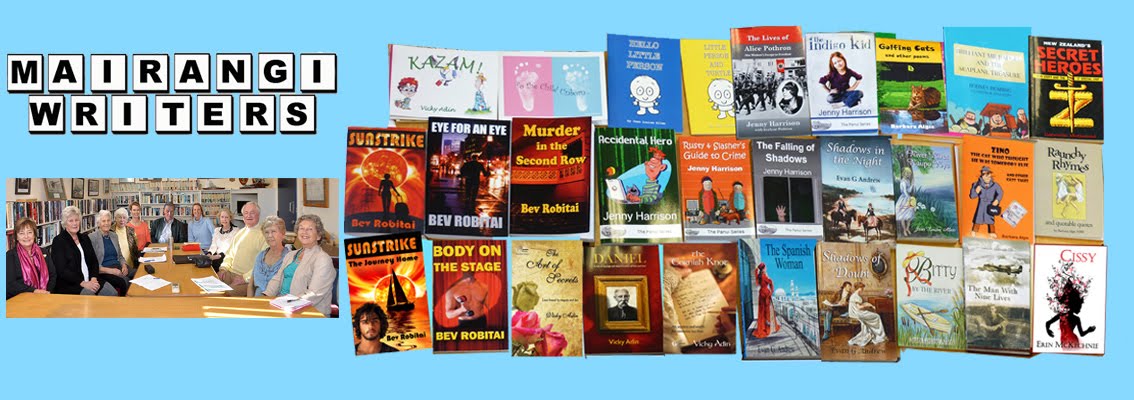The horror genre is one of the most popular literary
forms.
Maureen Green
When writing 'Thriller Chillers' and immersing myself in the character role, emotional empathy becomes
so strong that I find it somewhat draining and frequently disturbing when the character
takes over. I'm often left wondering where that chilling idea or action came
from, for, nothing, nothing captures
the pain that lies at the heart of human beings more than something
overwhelmingly frightful, loathsome, shocking and abhorrent.
In a
truly horrific experience we have no clear idea of how to react. We may freeze;
or our head may snap up like an alarmed bird's and our eyes swell before all
the panic, the pain and the quashed screams of one's life erupt into the air.
The horror genre is constructed around such emotional and physical responses.
It seeks to produce in its audience anxious fright and hair-raising chills.
Across history and culture, horror stories have served to
document and illuminate the human condition. Horror lies at the very core of
literature, from scary narratives in folklore and fairy tales to a long-standing
tradition of fear-narration. Horror lies in the tension between the figurative
and the real, the conscious and the unconscious. It is an emotional response
extremely personal. An act that horrifies some will barely make an impression
on others. 'Man's inhumanity to man', anger-motivated violence, murder, abuse,
and the worst of all acts, the deprivation and cruelty heaped upon our children
disgusts, yet provides compelling reading.
In
our life time we can experience, either as an onlooker or an active participant,
acts so bizarre, that extreme sensory responses activate.
It
was during the 1951 Waterfront Dispute - the longest, costliest and most
widespread dispute in New
Zealand history - that I tasted, for the first
time, the extreme emotional forces associated with horror. Few confrontations
have divided New Zealand
and created a depth of feeling that produced bitter divisions between
neighbours, friends and families. The number of New Zealanders unaffected could
be counted on one hand during this time of great nationalism, civil
disobedience, prejudice, stubbornness, passion and anger. For five months, men,
women and children throughout the country carried the burden of these events.
It is in, Footprints in the Sands of Time, a collection
of short stories recognized by the Turnbull Library as of historical
significance, that I write about this experience. A story I called -
Blackballed
Something thwacked on
the back of my neck. A small paper missile; the ones made by spitting on paper
and rolling it into a tight ball, ricocheted onto my desk. I swung around and Jackson leered. His lips
stretched taut showing the gaps in his front teeth. “Your old man’s gonna get
it today. The miners and the wharfies have something special for the pigs
today. They've got guns.”
“Leave
me alone,” I whispered.
Miss
Bagnall lifted her head from her marking. “Adelaide Taylor, no talking. You
know the rule during silent reading.”
“But,
Miss...”
The
class, nearly all children of the strikers, snickered as Miss Bagnall placed
two fingers to her lips. “Shhhhh.”
And
the class aped her reprimand.
I
should have known better than to try to explain. There were hundreds of the
strikers’ kids in our school. Roberta Thomas and I were the only policeman’s
kids who attended Omanaki School.
The
old school bell burred out, luncheon break. Four classes in the unit, eager to
be free of the restraints of the classroom surged along the corridor jostled
and elbowed at the narrow doorway before spilling out into the playground and
freedom.
As usual, the strikers’ kids gathered
at the far end of the playground. Today their mood seemed different. Ugly! I
could smell it. I even thought I could taste it...'
It
was during this time of unrest that I discovered Edgar Allan Poe's, 'The Tell-Tale
Heart', a tale where an old man's cloudy eye incites the narrator to an act of
madness.
The
hook, 'True——nervous—very, very, nervous I have been and am.' captured my
attention; the story as it unfolded was creepy, chilling, thrilling.
While
I read, 'Meantime the hellish tattoo of the heart increased. It grew quicker
and quicker and louder and louder every instant,' my own heart banged against
my ribcage and my pulse played a symphony in my ears. I heard that heart beat
in moments of silence, week after week.
I
then tackled Poe's poetry and was mesmerised by the lyricism and the economy of
words used to create a chill.
Leave my loneliness
unbroken!
-quit the bust above my
door
take thy beak from out
my heart,
and take thy form from
off my door!
Quoth the Raven,
"Nevermore"
And the Raven, never
flitting, still is sitting, still is
sitting
On the pallid bust of
Pallas just above my chamber door;
And his eyes have all
the seeming of a demon's that is dreaming,
And the lamp-light o'er
him steaming throws his shadow to the floor;
And my soul from out
the shadow that lies floating on the floor
Shall be
lifted-nevermore
Consequently,
roughly fifty years on, having immersed myself in the works of Edgar Allan Poe,
Nathaniel Hawthorne, Mary Shelley and other canonised authors of horror
stories, when I came to writing for adults I chose to write 'Thriller Chillers' .
Works in the horror genre remain some of the best-selling and most cherished books
of all time with chilling experiences that assist in providing the reader with coping strategies.
I
have so many horrific acts which have never been aired in the public domain to
weave into works. Books already published have a bizarre event that motivated
the writing. Consequences, Tangled Web, Snatched are adult works and, Code
of Silence is a work for young adults.
